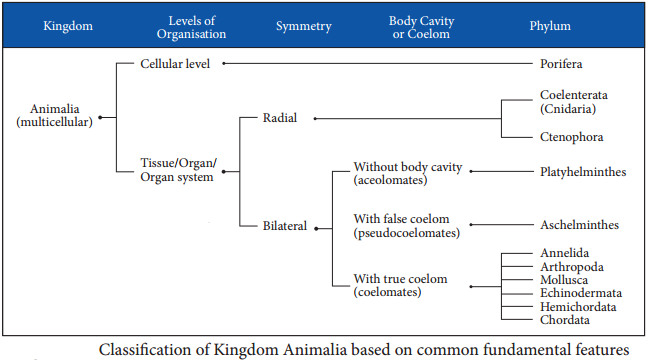Learninsta presents the core concepts of Biology with high-quality research papers and topical review articles.
Classification of Kingdom Animalia
Animal kingdom is divided into two sub-kingdoms, the Parazoa and Eumetazoa based on their organisation.
1. Parazoa:
These include the multicellular sponges and their cells are loosely aggregated and do not form tissues or organs.
2. Eumetazoa:
These include multicellular animals with well defined tissues, which are organised as organs and organ systems. Eumetazoans includes two taxonomic levels called grades. They include Radiata and Bilateria.
Grade 1: Radiata
Among the eumetazoa, a few animals have an organisation of two layers of cells, the outer ectoderm and inner endoderm, separated by a jelly like mesoglea. They are radially symmetrical and are diploblastic. Examples: Cnidarians (sea anemone, jelly fish) and Ctenophores (comb jellies).
Grade 2: Bilateria
The eumetazoans other than Radiata, show organ level of organisation and are bilaterally symmetrical and triploblastic. The grade Bilateria includes two taxonomic levels called Division.
Division 1: Protostomia (Proto: first; stomium: mouth)
Protostomia includes the eumetazoans in which the embryonic blastopore develops into mouth. This division includes three subdivisions namely acoelomata, pseudocoelomata and schizocoelomata.
Division 2: Deuterostomia (deuteron: secondary; stomium: mouth)
Eumetazoans in which anus is formed from or near the blastopore and the mouth is formed away from the blastopore. It includes only one subdivision Enterocoelomata. They have a true coelom called enterocoel, formed from the archenteron.
